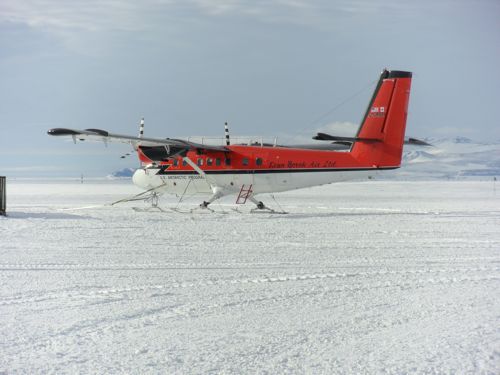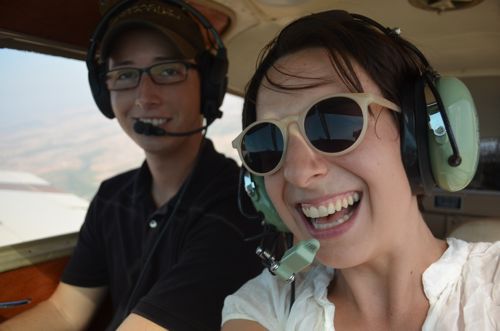The Twin OtterA highly maneuverable utility aircraft developed by de Havilland Canada. It can be flown slowly and in tight circles, and is designed for 20 passengers, short takeoffs and landings, and often used for cargo, passengers, and as a science platform.
To get to AGO 4, we will take a Twin OtterA highly maneuverable utility aircraft developed by de Havilland Canada. It can be flown slowly and in tight circles, and is designed for 20 passengers, short takeoffs and landings, and often used for cargo, passengers, and as a science platform. plane. Twin otters are a common way to travel to and from field sites here.

Unlike the LC-130 plane I arrive to the South Pole in, twin otters do not have skis. Since there is snow drift at many of the remote sites, the twin otter pilots typically skim the surface of the field site runways before landing. They do this so they can test to see if the runway is safe or not. Another concern is fuel. The twin otters have fuel caches at various sites in case they run out. When the planes fly into the wind, they require more fuel. Since nobody can safely predict the wind patterns during the extent of the flight, it is important that the pilots always have enough fuel to return to safety.
Flying planes
This past summer I had the opportunity to fly a smaller plane in Texas. I took a flying lesson and was allowed to steer the plane for a while.

Planes get lift because of a scientific principle called the Bernoulli Effect. The principle is that when air or another fluid moves with a high velocity, it has less pressure. When a plane flies, its wings are curved. The curve of the bend causes air molecules to speed up on the top of the wing, creating a higher velocity above the wing. According to Bernoulli's principle, this higher velocity creates a low pressure above the wing. The velocity below the wing is lower, so there is a higher pressure. The higher pressure pushes up on the wings of the plane creating lift.
Test out the Bernoulli Principle!
Want to test this principle out yourself? Get a strip of paper and place it just between your chin and mouth. Blow air onto the top of the paper. This will create a higher velocity above the paper and a lower velocity under it. You should notice that the paper lifts up!
Questions
Do you think birds use the Bernouilli Principle? Explain
Math Connection
If it takes 4 hours to get to AGO 4, which is 550 miles away, how fast does the plane travel?

Comments